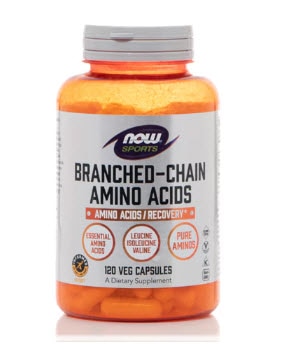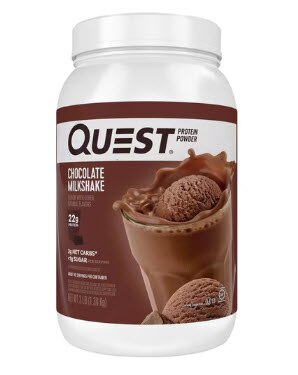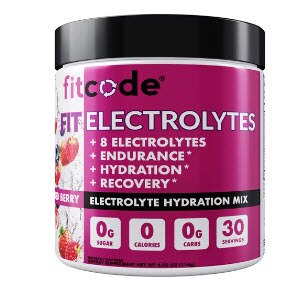If you keep your workout routine consistent—doing the same exercises with the same weights and number of reps and sets every week—-you will likely see little progress after a while. Your muscles adapt to the weights and training volume imposed by your workout regimen, resulting in a plateau in your improvements.
This is why it is crucial to employ the principle of progressive overload in your training program: progressive overload helps prevent stagnation in your progress and maximize your improvements in strength and muscle growth by continuing to challenge your muscles enough to stimulate adaptations.
What is progressive overload?
Progressive overload involves gradually and systematically increasing the difficulty of your workouts.
The “overload“ method portion of the term refers to ensuring the volume and intensity of the exercises you perform in a weightlifting workout exceed the current capacity of your muscles within reasonable limits.
Though this may sound counterintuitive, if you want to build muscle and increase your strength, you actually need to damage your muscle fibers ever so slightly in your resistance training workouts. This damage is a large part of why your muscles feel sore after a workout.
Microscopic tears trigger the reparative process, which in turn, reinforces the existing muscle fibers you have. This thickens the fibers, causing an increase in volume (muscle growth or hypertrophy) and a potential increase in strength. To induce some amount of microscopic damage to your muscle fibers, you need to be lifting weights that are heavier than the current capacity of your muscles or doing enough reps and sets per exercise so that the total volume exceeds the capacity.
How do you follow the progressive overload principle?
To make sure your training plan follows progressive overload principles, you need to increase the difficulty or volume of your strength training workouts from week to week, keeping in mind that you should occasionally take “detraining weeks,” where you either rest altogether or reduce the training volume and weights to allow for more complete recovery.
Progressive overload can be accomplished by increasing the weight or load you are lifting or adding more reps per set (or sets per exercise).
Studies have found that both approaches work equally effectively, but most strength coaches suggest that you first increase the number of reps per set until you can do 12 with good form. Then, you should increase the weight and decrease the number of reps back down to 6-8 (or however many you can handle with the new weight).
Here are some examples of the variables you can manipulate to use progressive overload in your training program:
Resistance and Intensity
Lifting heavier weights is the simplest way to progressively overload your muscles as you get stronger.
You can also make exercises more difficult for the muscle groups you are targeting. For example, if you are currently performing, kneeling push-ups, you can move to full push-ups. Instead of doing squats, you can progress to split squats or lunges so that each leg is trained individually and subjected to higher loads.
With strength training, the specific exercises you perform and the amount of weight that you lift are the primary factors that affect intensity, but you can also add reps and sets, which will increase training volume, and this can also increase intensity in some ways.
Reps and sets
Increasing the number of reps and sets you perform for each exercise is a great way to bump up the total training volume in a workout and training week.
Number of exercises per workout
Adding additional exercises to your workouts is another way to increase training volume.
This technique is best reserved for advanced weightlifters because beginners need to be careful about technique and not overdo it while still getting used to the movement patterns and loads used in a workout.
Keep in mind that adding more exercises per session generally has the most impact when you are adding additional exercises that target the same muscle groups already trained in the session. Otherwise, you aren’t really overloading the muscles in the workout because you’re using different muscle groups with the additional exercises you’ve incorporated into the session.
For example, if you are doing a body part split routine where you do an upper-body workout twice a week and a lower-body workout twice a week, add additional upper-body exercises on upper-body days.
Frequency
If you are currently lifting weights two or three days per week, you can add an additional workout session per week. This increases your training volume, as well as how often your muscles are subjected to the muscle protein synthesis stimulus.
Finally, it’s important to start with only one variable in a session or make minor adjustments to the volume and intensity rather than attacking both variables aggressively. This can overload your muscles too much and cause damage beyond the normal healing process, leading to actual injuries.
Listen to your body when implementing progressive overload in your workouts. You may not be able to progress linearly through a training program. In fact, taking recovery weeks where you decrease volume and intensity is important to prevent injuries and allow for more complete recovery.
Supporting improvements in strength and muscle growth
In addition to the stimulus—resistance training workouts—your body needs to have the necessary resources to repair and build new muscle tissue. These “resources” are the building blocks for muscle (amino acids from protein) and energy for the muscle protein synthesis process (adequate calories).
The American College of Sports Medicine recommends that athletes consume at least 1.2–2.0 grams of protein per kilogram of body weight per day. You may need even more if you’re a bodybuilder doing intensive training.
Rather than consuming all of your daily protein needs in one or two big meals, spreading out protein intake in doses of 25-30 grams of protein per meal or snack, or about 0.53 g/kg protein per meal with three meals a day, or 0.4g/kg protein per meal with four meals per day has been shown to be a better approach for supporting muscle growth. The body can only absorb so much protein at one time.
Carbohydrates are also important. Carbohydrates are the preferred fuel source for your muscles during strength training workouts. If you are under-fueled before training, you won’t be able to maximize the benefits of your workout.
Before weightlifting, aim to have a nutritious snack composed primarily of carbohydrates and a little bit of protein and fat for satiety. Choose pre-workout snacks that digest easily and won’t leave you feeling bloated or overfull. Examples include trail mix and a banana, energy bars, an apple with vegan jerky, organic energy balls, whole-grain oatmeal, dried fruit, oat bars, nut butter and honey on wraps and fig bars.
Note that pre-workout supplements are popular among weightlifters. However, most pre-workout drinks are formulated to provide caffeine and various B vitamins for energy rather than usable calories for your muscles. To optimize health, it is important to fuel with carbs as well.
Studies have found that drinking sports beverages that contain carbs during resistance training workouts can help increase muscle protein synthesis.
Consuming carbohydrates after training also helps facilitate the muscle protein synthesis process.
The general recommendation is to aim for a carbs-to-protein ratio of 3:1 or 4:1 in your post-workout snack. For example, if you want to have 20 grams of protein, you should have 60 to 80 grams of carbohydrates. Because there are approximately 4 calories in every gram of carbohydrates and protein, this works out to a post-workout snack of around 320-400 calories.
Examples of good snacks after weightlifting include protein bars, a nut bar with a tuna or turkey wrap, high-protein cereal with fruit and milk, Greek yogurt with granola, eggs with whole-grain bread or tuna with crackers.
Another healthy post-workout snack is a protein shake made with Greek yogurt, protein powder, almond milk, fruit, baby spinach, flax seeds and nut butter.
Lastly, certain supplements, such as protein powders, branched-chain amino acids (BCAAs) and creatine, may increase the rate of muscle protein synthesis. Working with a sports nutritionist can help you find the best diet and supplement regimen for building muscle and supporting your strength training workouts.




